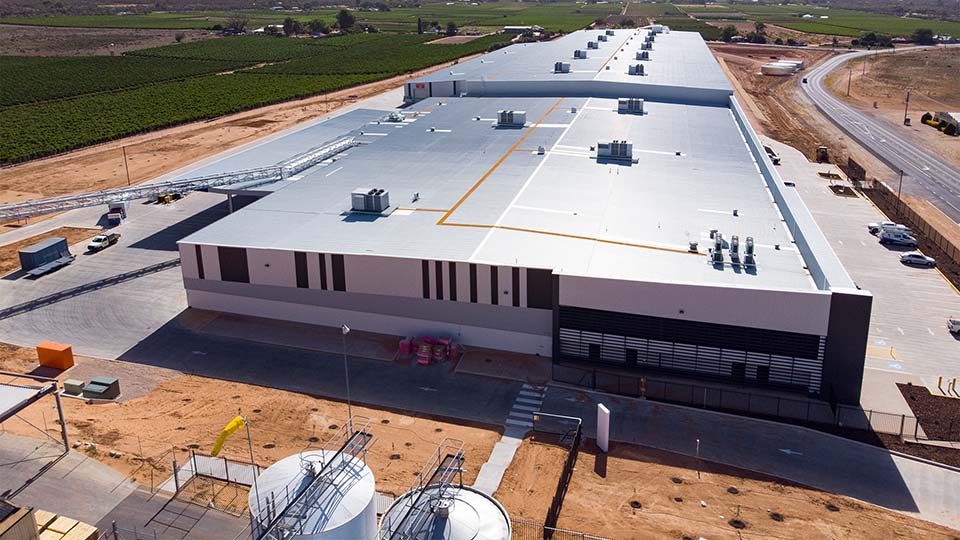
One thing which gets some wine enthusiasts into a tizzy is whether or not to aerate the wine before consumption. If you are a bit vague about these things, aeration is simply giving the wine a bit of time so that the oxygen in the air can react with it and enhance the flavours and aromas. Different wines need different amounts of aeration; some need none at all.
How often have you seen a waiter open a wine bottle, then leave it on your table to stand for a few minutes “to breathe”. Quite often, I’d guess. This ritual is completely pointless and I shall tell you why. When the bottle is standing on the table, only a tiny surface area of the wine in the narrow neck of the bottle is exposed to the air. This is far too small to make any significant difference. It’s far better to pour the wine into the glasses and let it rest for a few minutes. This will aerate the wine much more effectively.
If you are at home, you can aerate the wine by tipping it into a wine jug or carafe. I use small, plain glass carafes available from the kitchen shop in Pattaya Klang next to Foodland. They offer several sizes but I prefer those that hold 250ml. They cost a mere Bt. 32.00 each and hold exactly a third of a bottle. If you are sharing a bottle with two others, just pour the entire contents into three 250ml carafes. Your friends can then refill their glasses as they wish. This process also avoids unseemly fist-fights later in the evening. Incidentally, the same shop sells attractive and sturdy-looking small wine jugs for only Bt. 29 each, the kind you see in French bistros. For a meal of simple country food, they look just right on the table.
It’s a good idea to sample the wine before deciding whether or not to aerate it. As a general guideline, the heavier the wine’s body, the longer you need to aerate it. Some rich, reds improve enormously after about 20-30 minutes air contact. Light reds and most whites usually need little aeration or none at all, and of course sparkling wine is never aerated. For those who use boxed wine, a few carafes are pretty well essential.
Cabernet Sauvignon invariably improves with some air contact and even mass-produced Cabernets can benefit from a few minutes’ exposure. There are some good bargain Cabernets around too, especially at Lotus and Big C. Even wine specialists like Wine Connection and Vines to Vino come up with bargains from time to time.
This particular grape has been a world-wide success for several reasons. For a start, Cabernet Sauvignon vines are not terribly fussy and they’re extremely adaptable to different soil types and climates. They produce a dense leaf canopy and relatively high grape yields, giving wine producers a choice between quantity and quality. The grapes retain elements of their distinctive character in most regions and the fame of the name has an irresistible lure to wine companies looking for a reliable return on their investment. Cabernet can be made into a simple commercial wine or a fine wine of great subtlety with complex secondary and tertiary aromas and flavours along with ageing potential. Warm climate Cabernets tend to be fuller than their northern cousins and rich in blackcurrant and cherry, sometimes with green bell pepper flavours.
Vineyards World of Wines Cabernet Sauvignon 2020, Australia. (Bt. 389 @ Lotus’s)
This wine looks, smells and tastes like something more expensive. I could probably say the same of other wines in this range, marketed by Accolade Wines of Australia because they are excellent value. This one is an attractive red colour and you’ll probably notice it has decent “legs” too. Although this phenomenon is not in itself an indicator of quality, people tend to associate it with higher-quality wines. At 13% ABV, there’s an unmistakable warm-climate Cabernet Sauvignon aroma: cherry, blackcurrant and blackberry come to the fore and there’s a pleasing secondary aroma that reminds me of white pepper.
Although the wine is perfectly dry, there’s plenty of forward fruit on the palate. It’s medium bodied and smooth, with soft tannins and a long and satisfying finish. Despite being a mass-produced wine, it is a well-crafted Cabernet which would go well with beef or lamb. It would add a bit of glitz to the simplest foods, especially rich, meaty dishes. Try it with charred gruyere burger or with marinated ribeye steak. It would work well with mushroom pizza, though my first choice for pizza would nearly always be a simple light Italian wine.
Avoid serving Cabernet too cold, which is a common problem in these parts. A low temperature will tend to hide the fruit and emphasize the tannins. In our warm and humid climate, the wine should taste slightly cool but no more. A bit of aeration will do it no harm, but finish the bottle within a day or two before the freshness fades. This is rarely a problem for me. Oh yes, did you know that historically, Cabernet Sauvignon is one of the six so-called Noble Grapes? I wonder if you can name the other five.
 |
 |
 |





